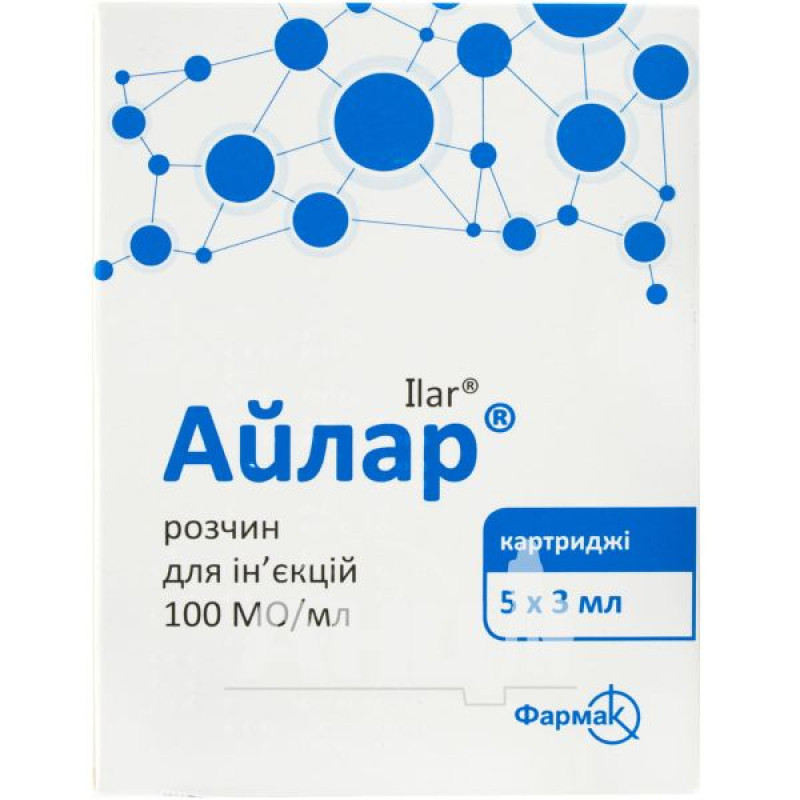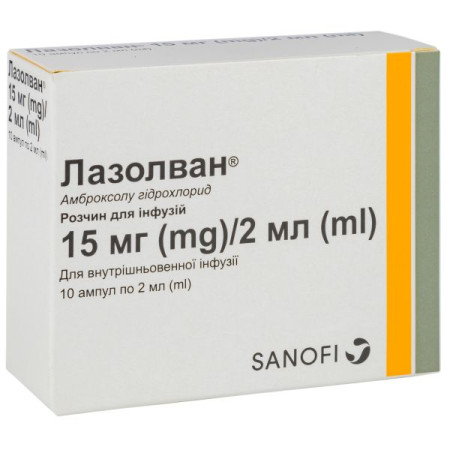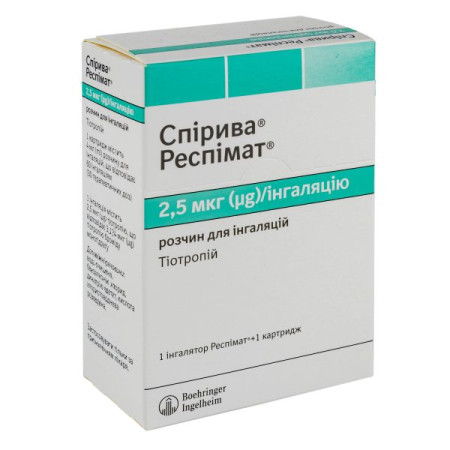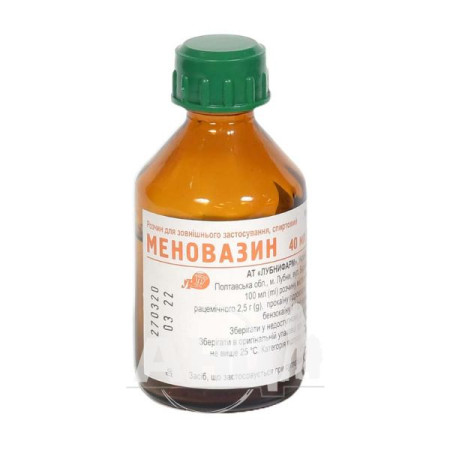Aylar solution for injection 100 IU/ml cartridge 3 ml blister No. 5

Instructions Aylar solution for injection 100 IU/ml cartridge 3 ml blister No. 5
Composition
active ingredient: insulin glargine;
1 ml of solution contains insulin glargine (DNA-recombinant) 100 IU;
1 cartridge contains 3 ml of solution for injection, corresponding to 300 U of insulin glargine;
Excipients: metacresol, glycerin (85%), zinc chloride, diluted hydrochloric acid or sodium hydroxide solution, water for injections.
Dosage form
Solution for injection.
Main physicochemical properties: transparent colorless solution.
Pharmacotherapeutic group
Long-acting insulins and analogues for injection. ATC code A10A E04.
Pharmacological properties
Pharmacodynamics
Insulin glargine is designed as a human insulin analogue with low solubility in neutral medium. It is completely soluble in the preparation due to the acidic environment of the injection solution (pH 4). After injection into the subcutaneous tissue, the acidic solution is neutralized, which causes the formation of microprecipitates from which a small amount of insulin glargine is constantly released. This provides a smooth (no peaks) and predictable profile of the concentration-time curve, as well as a longer duration of action of the drug.
Insulin glargine is metabolized to 2 active metabolites, M1 and M2 (see section "Pharmacokinetics").
Insulin receptor binding: In vitro studies indicate that the affinity of insulin glargine and its metabolites M1 and M2 for the human insulin receptor is similar to that of human insulin.
Binding to the IGF-1 (insulin-like growth factor 1) receptor: The affinity of insulin glargine for the IGF-1 receptor is approximately 5-8 times higher than that of human insulin (but approximately 70-80 times lower than that of IGF-1 for this receptor), while the metabolites M1 and M2 bind to the IGF-1 receptor with an affinity slightly lower than that of human insulin.
The total therapeutic concentration of insulin (insulin glargine and its metabolites) determined in patients with type 1 diabetes mellitus was significantly lower than that required for half-maximal binding to the IGF-1 receptor and subsequent activation of the mitogenic-proliferative pathway triggered by the IGF-1 receptor. Endogenous IGF-1 at physiological concentrations can activate the mitogenic-proliferative pathway; however, the therapeutic concentrations of insulin used in insulin therapy, including insulin glargine therapy, are significantly lower than the pharmacological concentrations required to activate the IGF-1-mediated pathway.
The most important action of insulin, including insulin glargine, is the regulation of glucose metabolism. Insulin and its analogues lower blood glucose levels by stimulating its uptake by peripheral tissues, particularly skeletal muscle and adipose tissue, and by inhibiting glucose production in the liver. Insulin inhibits lipolysis in adipocytes and proteolysis, while enhancing protein synthesis.
Equivalence of the same doses of insulin glargine and human insulin has been demonstrated after intravenous administration of these products. As with all insulins, the time course of action of insulin glargine may be affected by physical activity and other factors.
Studies using the euglycemic state fixation method, which were conducted with the participation of healthy volunteers and patients with type 1 diabetes mellitus, demonstrated that, unlike NPH (neutral protamine Hagedorn) - human insulin, the onset of action of insulin glargine after subcutaneous injection occurs later, the drug acts smoothly, without causing peaks in blood glucose concentration, and the duration of its action is prolonged.
The longer duration of action of subcutaneously administered insulin glargine is directly related to its slower absorption, allowing once-daily administration. The time course of action of insulin and its analogues, such as insulin glargine, can have significant interindividual variability.
Following intravenous administration of insulin glargine and human insulin, symptoms of hypoglycemia or counterregulation of the hormonal response were similar in healthy volunteers and patients with type 1 diabetes.
Pharmacokinetics
Comparison of insulin plasma concentrations in healthy volunteers and diabetic patients indicated a slower and more prolonged absorption and lack of a peak activity after subcutaneous injection of insulin glargine compared to human NPH insulin. Thus, the insulin glargine concentrations obtained were fully consistent with the pharmacodynamic activity profile of the drug over time.
When insulin glargine is administered once daily, steady-state concentrations are reached within 2–4 days after the first injection.
After subcutaneous injection in diabetic patients, insulin glargine is rapidly metabolized at the carboxyl terminus of the beta chain to form two active metabolites, M1 (21A-glycine-insulin) and M2 (21A-glycine-des-30B-threonine-insulin). In plasma, metabolite M1 is the major circulating compound. Exposure to M1 increases proportionally to the administered dose of insulin glargine. Pharmacokinetic and pharmacodynamic data suggest that the effect of subcutaneous injection of insulin glargine is primarily related to exposure to M1. Insulin glargine and metabolite M2 were not detected in the majority of study subjects, and when their levels could be determined, their concentrations were independent of the administered dose of insulin glargine.
In clinical studies, when analyzing subgroups based on age and gender, no differences in safety and efficacy were found between patients receiving insulin glargine and the overall study population.
Children and adolescents
In children receiving insulin glargine, plasma trough levels of insulin glargine and its major metabolites (M1 and M2) were determined, and the patterns of plasma concentrations were similar to those in adults, and no evidence was found for accumulation of insulin glargine or its metabolites with prolonged use of the drug.
Preclinical safety data
No special hazard for humans was identified in standard studies of safety pharmacology, repeated dose toxicity, genotoxicity, carcinogenic potential and toxicity to reproduction.
Indication
Treatment of diabetes mellitus in adults, adolescents and children aged 2 years and older.
Contraindication
Hypersensitivity to the active substance or to any excipient included in the preparation.
Interaction with other medicinal products and other types of interactions
There are a number of substances that affect glucose metabolism, and therefore their use may require adjustment of the insulin glargine dose.
Substances that may enhance the hypoglycaemic effect of insulin and increase the susceptibility to hypoglycaemia include oral antidiabetic medicinal products, angiotensin converting enzyme (ACE) inhibitors, disopyramide, fibrates, fluoxetine, monoamine oxidase (MAO) inhibitors, pentoxifylline, propoxyphene, salicylates and sulphonamide antimicrobials.
Substances that may reduce the hypoglycaemic effect of insulin include corticosteroids, danazol, diazoxide, diuretics, glucagon, isoniazid, oestrogens and progestins, phenothiazine derivatives, somatropin, sympathomimetic drugs (epinephrine (adrenaline), salbutamol, terbutaline), thyroid hormones, atypical antipsychotics (e.g. clozapine and olanzapine) and protease inhibitors.
Beta-blockers, clonidine, lithium salts or alcohol may either potentiate or weaken the hypoglycaemic effect of insulin. Pentamidine may cause hypoglycaemia, sometimes followed by hyperglycaemia.
In addition, under the influence of sympatholytic agents such as beta-blockers, clonidine, guanethidine and reserpine, signs of adrenergic counterregulation may weaken or disappear altogether.
Application features
Aylar is not the drug of choice for the treatment of diabetic ketoacidosis. Instead, intravenous regular insulin is recommended in such cases.
If treatment fails to achieve adequate glucose control or there is a tendency to increase episodes of hypo- or hyperglycemia, before changing the dosage of the drug, it is necessary to check whether the patient is adhering to the recommendations regarding the treatment regimen, the site of drug administration, the proper injection technique, and also to assess other important factors that affect the effectiveness of treatment.
Transferring a patient to another type or brand of insulin should be done under close medical supervision. Changes in strength, brand (manufacturer), type (regular, NPH, Lente, long-acting, etc.), origin (animal, human, human insulin analogue), and/or method of manufacture may require a change in insulin dose.
Insulin administration may induce the formation of insulin antibodies. In rare cases, the presence of insulin antibodies may necessitate dose adjustment to prevent hypo- or hyperglycemia (see section 4.8).
Hypoglycemia
Particular caution and increased blood glucose monitoring are necessary in patients in whom hypoglycemic attacks may be particularly dangerous from a clinical point of view, in particular in patients with severe stenosis of the coronary arteries or blood vessels supplying the brain (risk of cardiac or cerebral complications of hypoglycemia), as well as in patients with proliferative retinopathy who have not undergone photocoagulation (risk of transient post-hypoglycemic blindness).
Patients should be aware that under certain circumstances the first symptoms of hypoglycemia may be less noticeable. Symptoms indicating the development of hypoglycemia may change, become less pronounced or be absent altogether in patients belonging to certain risk groups. These include patients:
who have significantly improved glycemic control; in whom hypoglycemia develops gradually; elderly; who have switched from animal-based insulin to human insulin; with autonomic (vegetative) neuropathy; who have had diabetes for a long period of time; with psychiatric disorders;
who are simultaneously receiving therapy with certain other medicines (see section "Interaction with other medicines and other types of interactions").
In such situations, severe hypoglycemia (possibly with loss of consciousness) can occur before the patient realizes that their blood glucose level has dropped.
Since insulin glargine has a prolonged duration of action when administered subcutaneously, this may result in a longer time required to normalize glycemic control.
If a patient has normal or reduced levels of glycosylated hemoglobin, this may indicate that he or she has periodic undiagnosed (especially nocturnal) episodes of hypoglycemia.
To reduce the risk of hypoglycemia, it is very important for the patient to adhere to the drug dose, diet, correct insulin administration, and awareness of the symptoms of hypoglycemia. There are a number of factors that increase the susceptibility to hypoglycemia and require careful monitoring of the patient's condition and sometimes dose adjustment. These include:
changing the site of insulin injection; increasing sensitivity to insulin (for example, when eliminating stress factors); unusual, excessive or prolonged physical exertion; concomitant disease (for example, vomiting, diarrhea); unhealthy diet; skipping meals; alcohol consumption; some endocrine system disorders (thyroid dysfunction, adenohypophysis or adrenal cortex insufficiency) in the stage of decompensation; simultaneous use of certain other medications.
Comorbidities
The presence of a comorbid condition requires increased metabolic monitoring. In many cases, urine ketone testing is indicated and insulin dosage adjustment is often necessary. Insulin requirements may often increase. Patients with type 1 diabetes should continue to consume at least a small amount of carbohydrates regularly, even if they are able to eat little or no food or are vomiting. They should never stop using insulin completely.
Insulin antibodies
Insulin administration may result in the formation of insulin antibodies. In rare cases, the presence of insulin antibodies may necessitate dose adjustment to prevent hypo- or hyperglycemia (see section 5.1).
Using a syringe pen
Before using the pen, you should carefully read the instructions for use. Aylar should be used according to the instructions.
Mistaken administration of another drug
There have been reports of medication errors where other insulins, including short-acting insulins, have been accidentally injected instead of insulin glargine. The insulin label should be checked before each injection to avoid the mistaken administration of other insulins instead of insulin glargine.
The combination of the drug Aylar with pioglitazone
Cases of heart failure have been reported with pioglitazone in combination with insulin, particularly in patients at risk of developing heart failure. This should be taken into account when considering the combination of pioglitazone and Aylar®. Patients should be monitored for symptoms of heart failure, weight gain and oedema when using this combination. In the event of any worsening of cardiac symptoms, pioglitazone should be discontinued.
This medicinal product contains less than 1 mmol sodium (23 mg) per dose, i.e. essentially 'sodium-free'.
Ability to influence reaction speed when driving vehicles or other mechanisms
Patients should be advised to take the necessary precautions to avoid hypoglycemia while driving. This is especially important for those patients in whom the first signs of hypoglycemia are weak or absent, as well as for those patients in whom hypoglycemia occurs quite often. Careful consideration should be given to whether to drive or operate machinery in this condition.
Use during pregnancy or breastfeeding
Pregnancy. There are no data from controlled clinical studies on the use of insulin glargine during pregnancy. Data on the use of this drug in pregnant women (data on more than 1000 pregnancy outcomes) indicate that insulin glargine has no harmful effects on the course of pregnancy, and does not cause either malformations or toxicity to the fetus/newborn. No signs of reproductive toxicity have been observed in animals. The drug Aylar can be prescribed during pregnancy if necessary.
It is very important for patients with pre-pregnancy diabetes and for patients with gestational diabetes to maintain good metabolic control throughout pregnancy. Insulin requirements may decrease during the first trimester of pregnancy and usually increase during the second and third trimesters. Immediately after delivery, insulin requirements decrease rapidly (increasing the risk of hypoglycemia). Therefore, careful blood glucose control is of great importance.
Breastfeeding. It is not known whether insulin glargine is excreted in human milk. No metabolic effects are expected from the passage of insulin glargine into the newborn/infant via breast milk, as insulin glargine is a peptide that is broken down to amino acids in the human gastrointestinal tract. However, women may require dose and dietary adjustments during breastfeeding.
Reproductive function.
No direct harmful effects on reproductive function in animals have been identified.
Method of administration and doses
Dosage
Aylar contains insulin glargine, a long-acting insulin analogue. The drug is administered once a day at any time of the day, but at the same time each time. The syringe pen allows you to administer insulin doses in increments of 1 unit.
The dosage regimen of Aylar (dose and time of administration) should be selected individually. In patients with type 2 diabetes, Aylar can also be used simultaneously with oral antidiabetic drugs. The potency of this drug is expressed in units. These units are used exclusively for Aylar and are different from the IU or units in which the potency of other insulin analogues is expressed.
Children and adolescents
Applies to children aged 2 years and over.
Elderly patients (65 years and older)
In the elderly, age-related progressive deterioration of kidney function may cause a permanent decrease in insulin requirements.
Kidney failure
In patients with renal insufficiency, insulin requirements may be reduced due to impaired insulin metabolism.
Liver failure
In patients with hepatic insufficiency, insulin requirements may be reduced due to reduced capacity for gluconeogenesis and slower insulin metabolism.
Switching from other insulins to Aylar
When switching from treatment regimens with intermediate-acting or long-acting insulins to a treatment regimen with Aylar, there may be a need to change the dose of basal insulin, as well as to correct concomitant antidiabetic therapy (doses and timing of administration of additionally used regular insulins or rapid-acting insulin analogues or doses of oral antidiabetic drugs).
Switching from twice daily NPH insulin to Aylar
To reduce the risk of nocturnal or early morning hypoglycemia, patients who change their basal insulin regimen from twice daily NPH insulin to once daily Aylar should reduce their basal insulin dose by 20-30% during the first weeks of treatment.
During this period, the dose reduction should be at least partially compensated by an increase in the dose of meal-related insulin. After this period, the dosage regimen should be adjusted individually.
As with other insulin analogues, patients receiving high doses of insulin due to the presence of antibodies to human insulin may experience an improvement in the body's response to insulin administration when switching to Aylar.
When switching to another drug and during the first weeks thereafter, it is recommended to carefully monitor metabolic parameters.
Improvement in metabolic control and the associated increase in insulin sensitivity may require additional adjustment of the dosage regimen. Dose adjustment may also be necessary, for example, if the patient's weight or lifestyle changes, changes in the time of day when insulin is administered, or other factors that increase the susceptibility to hypo- or hyperglycemia occur (see section "Special instructions").
Method of administration
Aylar should not be administered intravenously. The prolonged action of Aylar is due to its administration into the subcutaneous fatty tissue. Intravenous administration of the usual subcutaneous dose may result in severe hypoglycemia.
There is no clinically relevant difference in plasma insulin or glucose levels after injection of insulin glargine into the abdomen, deltoid, or thigh. The injection site should be rotated within the recommended body area for insulin administration with each subsequent injection.
Aylar should not be mixed with any other insulin or diluted. Mixing or diluting may change the time course of the drug's action. In addition, mixing with other insulins may result in precipitation.
Insulin syringe pen
The introduction of the drug Aylar in cartridges requires the use of an appropriate dosing device - a syringe pen. It is recommended to use devices: VitalPen (Copernicus Sp. z oo, Poland), i-PEN (INSUPen) (Biocon Limited, India) or similar.
Syringe pens should be used according to the recommendations provided by the injection device manufacturer.
The manufacturer's instructions for using the pen should be strictly followed when filling the cartridge, attaching the needle, and injecting insulin.
If the insulin pen is damaged or not working properly (due to mechanical defects), it should be destroyed and a new pen should be used instead.
In the event of a malfunction of the pen (see the instructions for use of the pen), the solution from the cartridge can be drawn into a syringe (suitable for insulin administration and designed for 100 units/ml) and injected.
Cartridge
Before inserting the cartridge into the pen, it must be kept at room temperature for 1-2 hours. Inspect the cartridge before use. It can only be used if the solution in it is clear, colorless, without visible solid particles and has the same consistency as water. Since Aylar® is a solution, it does not require resuspension before use.
Before injection, all air bubbles should be removed from the cartridge (see instructions for use of the pen). Empty cartridges should not be refilled.
The insulin label should be checked before each injection to avoid mistakenly injecting other insulins instead of insulin glargine (see section 4.4).
Bottle
Check the bottle before use. It can only be used if the solution inside is clear, colorless, without visible solid particles and has the same consistency as water.
Since Aylar is a solution, it does not require resuspension before use.
Children
The drug should be used in children over 2 years of age only under close medical supervision.
Overdose
Symptoms
An overdose of insulin can lead to severe and sometimes prolonged hypoglycemia, which can be life-threatening.
Treatment
Mild hypoglycemia can usually be corrected by oral administration of carbohydrates. Dosage adjustments of medication and changes in diet or physical activity may also be required.
More severe hypoglycemia, accompanied by coma, seizures, or neurological disorders, requires intramuscular/subcutaneous glucagon or intravenous administration of concentrated glucose solution. Since hypoglycemia can recur even after the patient's clinical condition has clearly improved, prolonged carbohydrate intake and patient observation are necessary measures.
Adverse reactions
Hypoglycemia is generally the most common adverse reaction observed during insulin therapy. It occurs when the dose of insulin administered is much higher than the need for it.
Adverse reactions associated with the use of the drug are listed below by MedDRA system organ class.
On the part of the immune system: allergic reactions.
Metabolic and nutritional disorders: hypoglycemia.
Nervous system disorders: dysgeusia.
From the organs of vision: visual impairment, retinopathy.
Skin and subcutaneous tissue disorders: lipohypertrophy, lipoatrophy.
Musculoskeletal and connective tissue disorders: myalgia.
General disorders and administration site conditions: injection site reactions, edema.
Metabolic and nutritional disorders
Severe episodes of hypoglycemia, especially if they occur repeatedly, can cause damage to the nervous system. Prolonged or severe hypoglycemia can be life-threatening.
In many patients, the onset of symptoms indicating insufficient glucose supply to brain tissue (neuroglycopenia) is preceded by signs of adrenergic counterregulation. As a rule, the greater and faster the decrease in blood sugar, the more pronounced the adrenergic counterregulation and the more intense the characteristic symptoms.
Immune system disorders
Insulin administration may lead to the formation of antibodies to insulin. In clinical trials, the formation of antibodies cross-reacting with human insulin was observed with equal frequency in groups of patients treated with NPH insulin and insulin glargine. In isolated cases, the presence of insulin antibodies may require dose adjustment to prevent hypo- or hyperglycemia.
Vision disorders
A significant change in blood glucose levels can cause temporary visual impairment due to temporary changes in turgor and refractive disorders of the lens.
The risk of progression of diabetic retinopathy is reduced when sustained normalization of blood glucose levels is achieved. However, intensification of insulin therapy with sudden improvement in glycemic control may be accompanied by a temporary worsening of diabetic retinopathy. In patients with proliferative retinopathy, especially those who have not undergone photocoagulation, episodes of severe hypoglycemia may lead to temporary vision loss.
Skin and subcutaneous tissue disorders
As with any insulin product, lipodystrophy may occur at the injection site, resulting in a reduced rate of insulin absorption at the injection site. Constant rotation of injection sites within a given injection area may reduce or prevent these effects.
General disorders and administration site reactions
Injection site reactions include redness, pain, itching, hives, swelling, or inflammation. Most non-serious injection site reactions to insulin usually resolve within a few days to a few weeks.
Occasionally, insulin can lead to sodium retention and edema, especially in cases where increased insulin therapy improves glycemic control that was previously inadequate.
Children and adolescents
In general, the safety profile of the drug in children (under 18 years of age) does not differ from its safety profile in adult patients.
A higher incidence of injection site reactions (injection site pain, injection site reaction) and skin reactions (rash, urticaria) has been reported in children and adolescents (≤ 18 years) compared to adults.
There are currently no data on the safety of the drug in children under 2 years of age.
Expiration date
Cartridges – 2 years.
Expiration date after first use of the cartridge
The shelf life of the drug in the cartridge after opening is 28 days if stored at a temperature not exceeding 25 ° C. Protect from overheating and direct sunlight.
Cartridges in use should not be kept in the refrigerator.
Storage conditions
Keep out of reach of children!
Unopened cartridges
Store at a temperature of +2 °C to +8 °C (in a refrigerator). Do not freeze!
Avoid contact with the freezer compartment or cold storage units.
Keep the cartridge in the outer carton in order to protect from light.
Cartridges after first use
For storage conditions, see the "Expiration Date" section.
Unopened vials
Store at a temperature of +2 °C to +8 °C (in a refrigerator). Do not freeze!
Avoid contact with the freezer compartment or cold storage units.
Keep the vial in the outer carton in order to protect from light.
Vials after opening
For storage conditions, see the "Expiration Date" section.
Packaging
3 ml in a cartridge. 5 cartridges in a blister, 1 blister in a pack.
Vacation category
According to the recipe.
Producer
Biocon Limited.
Location of the manufacturer and its business address
Special Economic Zone, Plot No. 2-4, Phase-IV, Bommasandra-Jigani Link Road, Bommasandra Post, Bangalore – 560 099, India.
There are no reviews for this product.
There are no reviews for this product, be the first to leave your review.
No questions about this product, be the first and ask your question.






